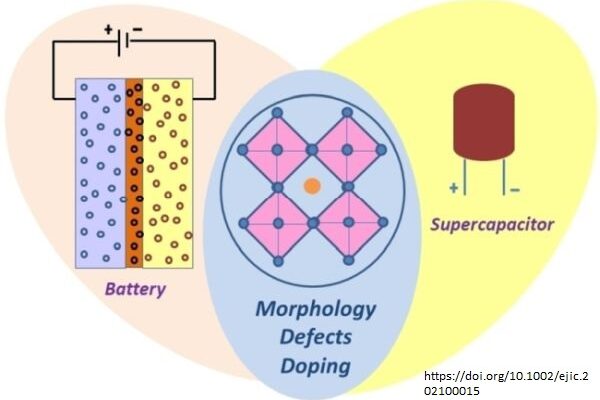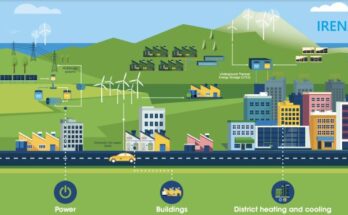We are currently facing big challenges in keeping our global environment sustainable. Discovering new and alternative energy sources is one of our greatest missions in the new era. As more and more new technologies have been invented for producing and storing energy, we always wonder about how to improve the efficiency of the new energy systems. For example, solar power has become one of the most practical new renewable energy sources that produces large amount of energy every year. Because solar power is widely available, inexhaustible, renewable, and environmentally friendly, it has become the most invested new energy sources. Seeking new technologies for production and storage of solar energy is one of the hottest research topics. Metal halide perovskites (MHPs) have emerged as one of the brightest stars amongst other new semiconductor materials in energy applications due to their advantages of being low cost, solution processable, band-gap tunable, high absorption coefficient, wide absorption spectrum, high mobility of charge carriers and long charge diffusion lengths, etc. The advancement of using Metal halide perovskites in photovoltaic applications is rapid. The power conversion efficiency (PCE) of metal halide perovskite materials was first found at about 3.8% and fast improved to a certified 22.7% within just a few years. Due to their unique characteristics and proven performance, metal halide and perovskites are considered as a promising candidate that can seriously challenge the conventional semiconductor materials for photovoltaic applications.
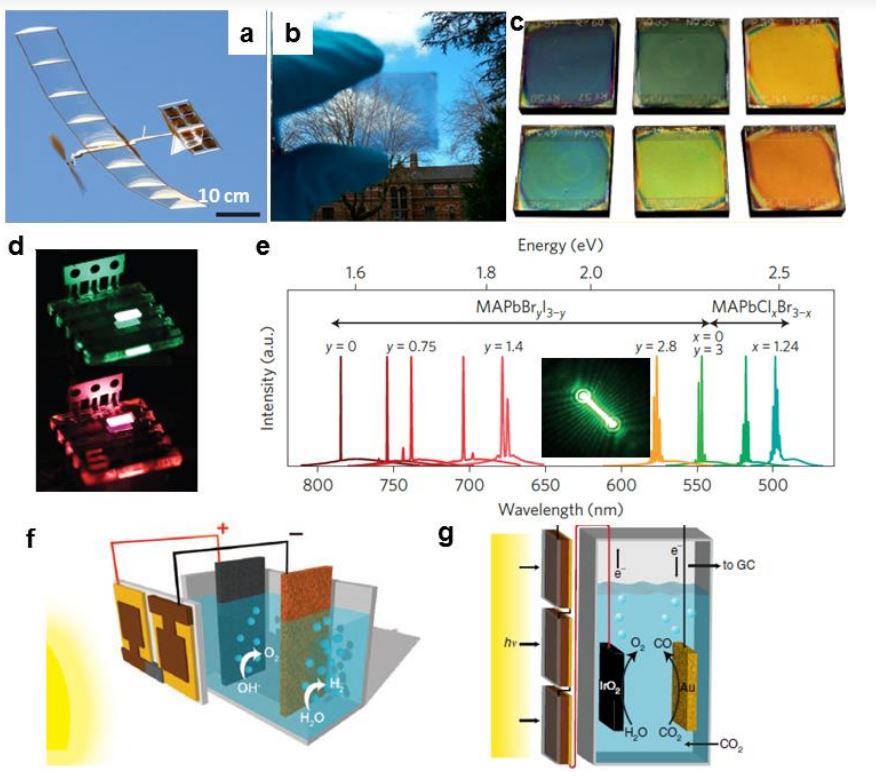
Metal halide perovskites were introduced to photovoltaic applications in 2009 and the studies of its application in energy technology has advanced rapidly since then. Researchers have reported the applications of metal halide perovskites (MHPs) for li-ion batteries and supercapacitors due to their excellent characteristics we described above as well as their flexible structures. MHPs as semiconductor materials show combined solid-state characteristics across metallic, superconducting, insulating, and semiconducting nature, which makes them accessible to many applications. MHPs have been used as the anodes of Li-ion batteries because they allow to store multiple lithium ions in a single unit cell resulting in the formation of LixABX3 (where A is a cation, B is a divalent metal ion and X is a halide), which is a type of semiconductor that is potentially more efficient than Silicon for photovoltaic applications. The ion diffusion process in MHP structure make them possible for storing large amounts of lithium ions in a single unit cell, which is a key requirement for battery electrode materials. MHPs also demonstrated the promise of achieving the desirable stability and capacity of battery electrodes.
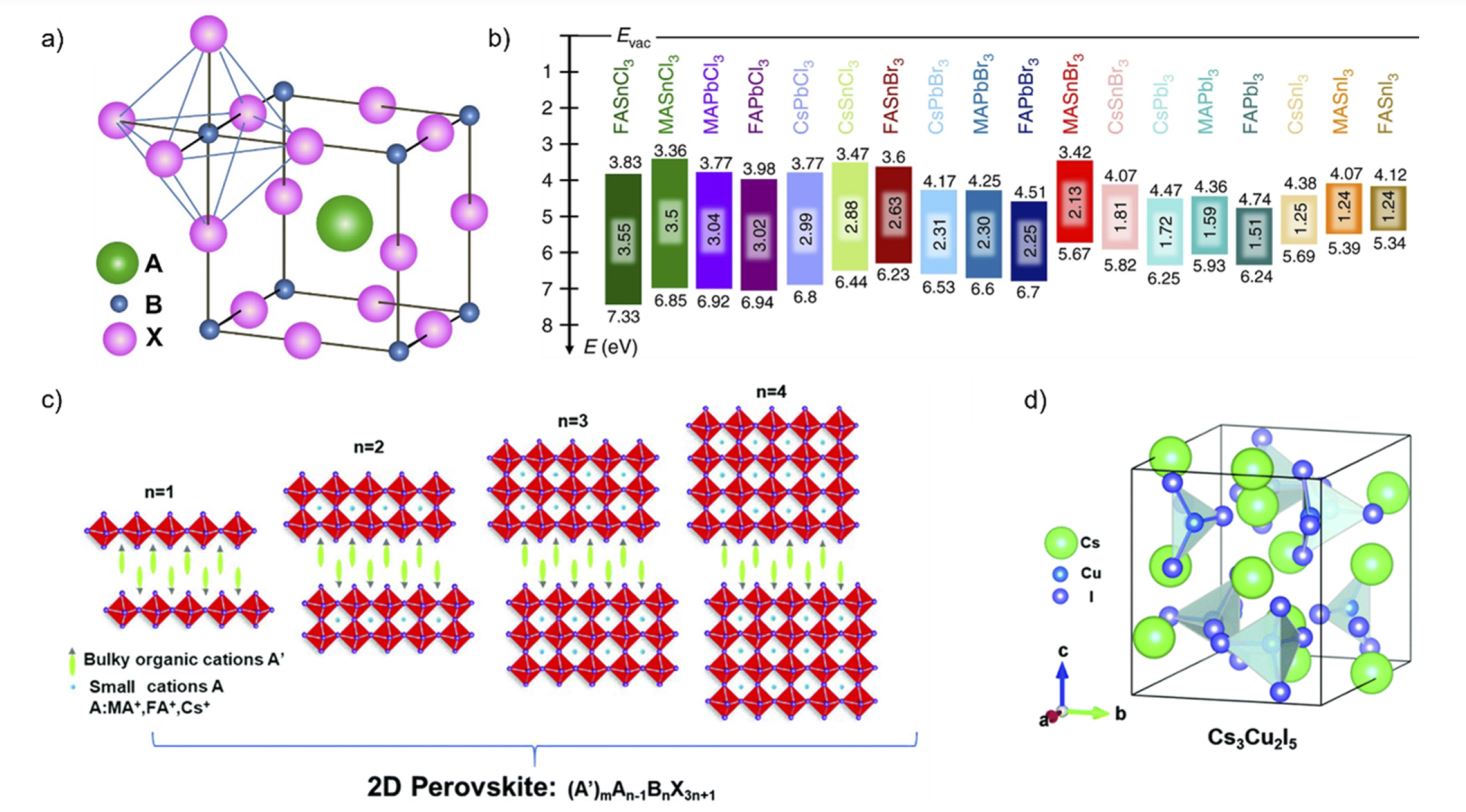
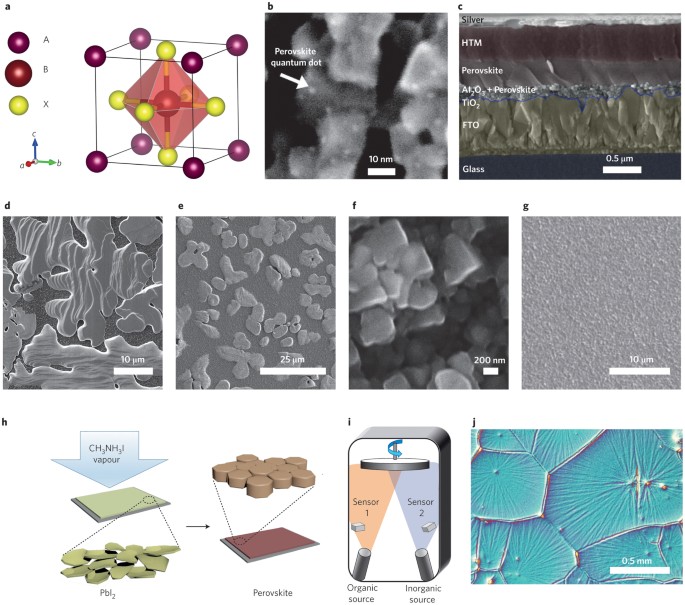
Besides their promising applications in photovoltaic devices, metal halide perovskites (MHPs) show potentials as excellent energy storage materials due to their attractive gravimetric capacities as Li-ion battery electrode materials. MHPs have unique characteristics compared to Silicon which has a diamond 3-D structure. MHPs can have very diverse structures, from 0-D to 3-D crystal structure, which determines their diverse shapes, from nano-sized dots, rods, wires, plates to crystals. Therefore, we result in diverse electronic properties of MHPs in different shapes and structures by changing their dimensions, structures, compositions, shapes and morphologies. Supercapacitors as an alternative way of short-term energy storage have demonstrated many attractive characteristics for practical applications. Halide perovskite based photorechargeable supercapacitors have been shown to be charged by an energy density of 30.71 Wh/kg and a power density of 1875 W/kg. It’s reported that photorecharge efficiency can be greatly improved by mixing carbon black in porous perovskite electrodes. To improve the performance of MHP based devices, researchers have done many studies of the impact of the morphology, defect density and doping of the perovskite active layer on the performance of energy storage devices based on MHPs.
Reference:
- Stranks, S. D., & Snaith, H. J. (2015). Metal-halide perovskites for photovoltaic and light-emitting devices. Nature nanotechnology, 10(5), 391-402.
- Tewari, N., Lam, D., Li, C. H. A., & Halpert, J. E. (2022). Recent advancements in batteries and photo-batteries using metal halide perovskites. APL Materials, 10(4), 040905.
- Mathieson, A., Rahil, M., Zhang, Y., Dose, W. M., Lee, J. T., Deschler, F., … & De Volder, M. (2021). Ruddlesden Popper 2D perovskites as Li-ion battery electrodes. Materials Advances, 2(10), 3370-3377.
- Kumar, R., Kumar, A., Shukla, P. S., Varma, G. D., Venkataraman, D., Bag, M. (2022). Photorechargeable Hybrid Halide Pervoskite Supercapacitors. ACS Appl. Mater. Interfaces, 14 (31), 35592-35599. https://doi.org/10.1021/acsami.2c07440
- Narayanan, S., Parikh, N., Tavakoli, M. M., Pandey, M., Kumar, M., Kalam, A., … & Yadav, P. (2021). Metal halide perovskites for energy storage applications. European Journal of Inorganic Chemistry, 2021(13), 1201-1212. https://doi.org/10.1002/ejic.202100015
- Pareja-Rivera, C., Morett, D., Barreiro-Argüelles, D., Olalde-Velasco, P., & Solís-Ibarra, D. (2021). Lead-free halide perovskites, beyond solar cells and LEDs. Journal of Physics: Energy, 3.
- Liang, J., Zhu, G., Wang, C., Zhao, P., Wang, Y., Hu, Y., … & Jin, Z. (2018). An all-inorganic perovskite solar capacitor for efficient and stable spontaneous photocharging. Nano Energy, 52, 239-245.
- Parkhomenko, H. P., Shalenov, E. O., Umatova, Z., Dzhumagulova, K. N., & Jumabekov, A. N. (2022). Fabrication of Flexible Quasi-Interdigitated Back-Contact Perovskite Solar Cells. Energies, 15(9), 3056.
- Scheideler WJ (2022) Editorial: Solutions to Scaling and Reliability of Metal Halide Perovskites: Materials and Manufacturing Innovation at the Inflection Point of Solar Energy. Front. Energy Res. 10:902746. doi: 10.3389/fenrg.2022.902746
- Du, S., Yang, J., Qu, S., Lan, Z., Sun, T., Dong, Y., … & Li, M. (2022). Impact of Precursor Concentration on Perovskite Crystallization for Efficient Wide-Bandgap Solar Cells. Materials, 15(9), 3185.

